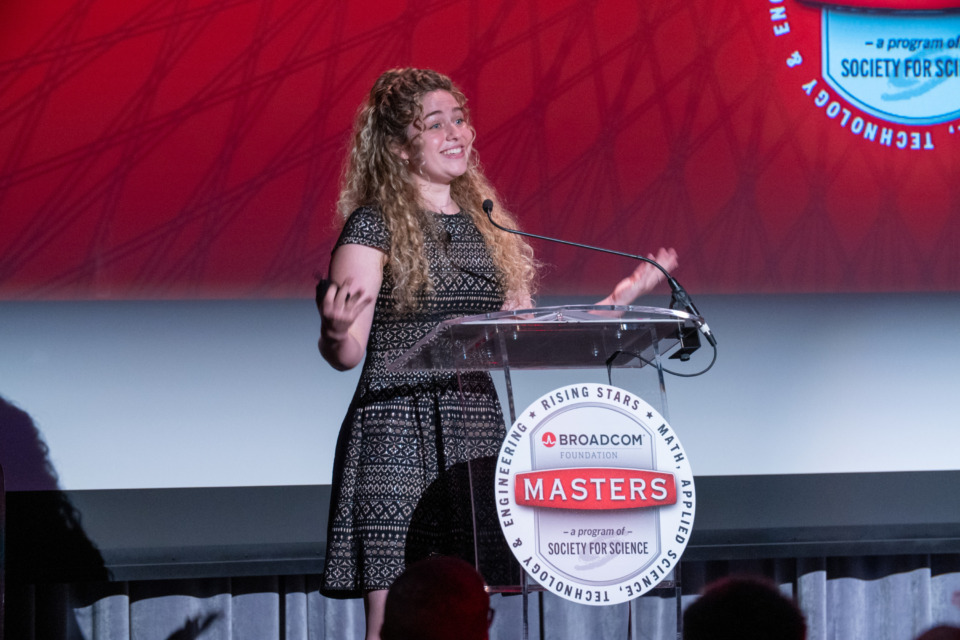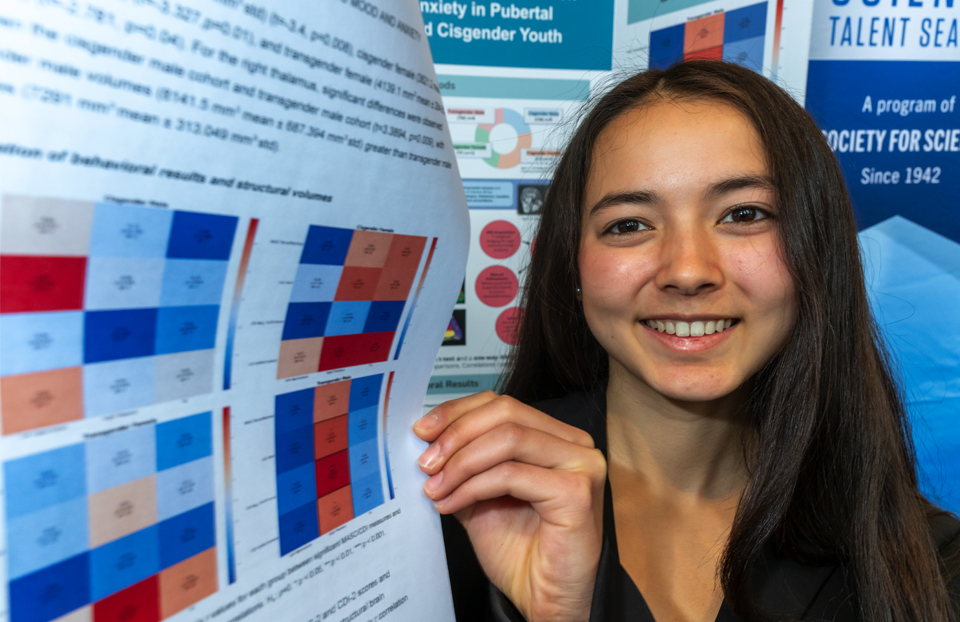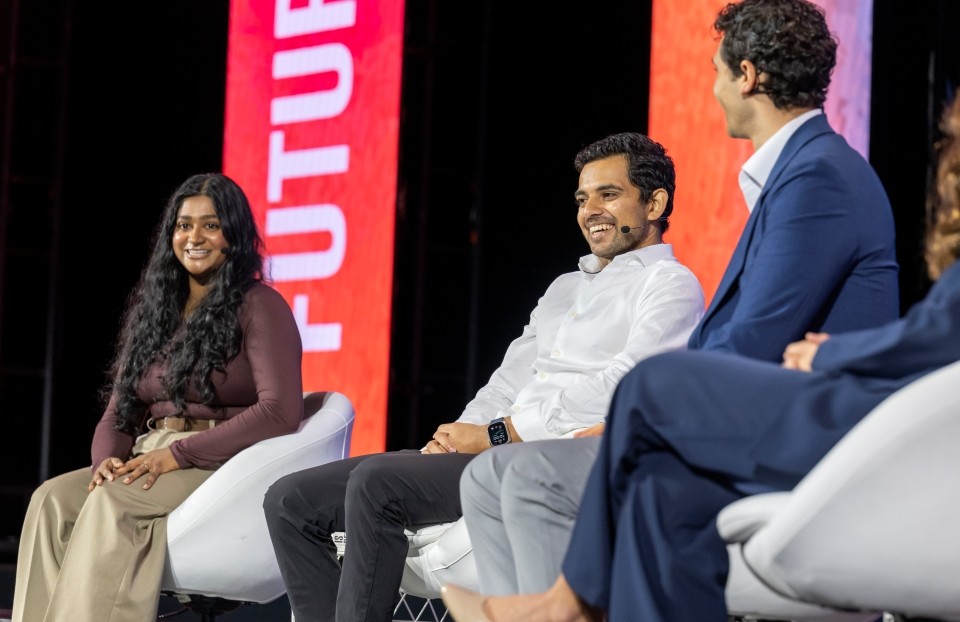Alumni, ISEF, Science Talent Search
Science skills lead alumna to Wall Street
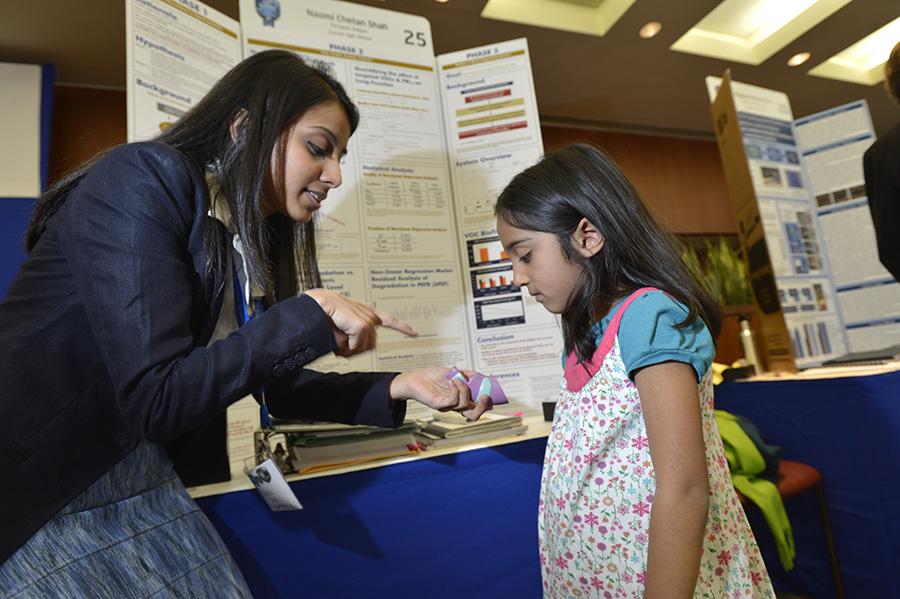
Science and STEM skills take our alumni into varied, exciting careers.
Naomi Shah, who graduated from Stanford University this month, moved to New York and now works on the trading floor at Goldman Sachs. She previously interned on the trading floor and “loved the fast-paced environment.” She wasn’t alone either — there are many STEM majors on the trading floor, she explained.
Science fairs and competitions, like the Society’s Intel ISEF and Science Talent Search —which Naomi competed in for all four years of high school (2009-2013), and in Intel STS 2013 — offer a platform to enter the scientific community and the confidence to pursue scientific endeavors, she said. And these skills are helpful in many different careers, including finance and business.
“While the trading floor is very different from a research lab, the skills of data analysis and modeling still apply,” Naomi said.
Read on below to learn about how science fairs prepared her for a STEM career and why science mentorship, especially for young girls, is so important.
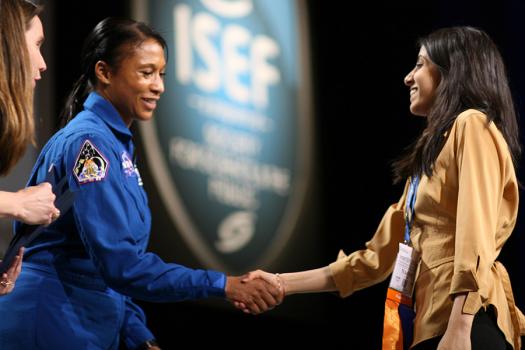
WHY SCIENCE FAIRS ARE CRUCIAL: As a young woman, science fairs offered me a platform to gain exposure to a well-established scientific community, peers who were excited about learning, and the confidence to continue to pursue scientific endeavors. Each year, I found that my ability to converse with people about scientific topics in an accessible way improved and that I felt more comfortable going through the scientific process. At science fairs, our respected judges would ask questions that prompted more questions in my research, which I would then embark on a mission to answer through another year of research.
Having the confidence to conduct independent research gave me many skills that made me excited for a STEM career and prepared me for it. The first was being able to work through unexpected problems that came up through the scientific research process. More specifically, I learned that it was okay to ask questions and admit when you do not know the answer to something. I became comfortable cold-calling and cold-emailing professionals in the field to interview them and ask how certain things worked or why my results were not what I expected.
The second skill was being able to present complex ideas in a simple way so that everyone could understand the research. Intel ISEF and Intel STS [now Regeneron STS] both pushed me to become an excellent communicator of the research that I had worked on. They [helped me] make sure that my research had direct implications on changing people’s behavior or even national regulatory policy.
Intel ISEF and Intel STS both pushed me to become an excellent communicator of [my] research.
Science fairs made me excited to present my new results each year and receive feedback. It was a cycle that truly prepared me for what science in the real world is like. Having experienced how STEM could allow me to make changes in a field that I was passionate about made me excited to share the same opportunities with other girls. I went back to my middle school science teacher, who first introduced me to the science fair circuit and encouraged me to participate, to mentor her students through the same process.
Society alumni enter diverse fields with their STEM backgrounds. Support them by becoming a member.
As a young woman, science fairs offered me a platform to gain exposure to a well-established scientific community … and the confidence to continue to pursue scientific endeavors.
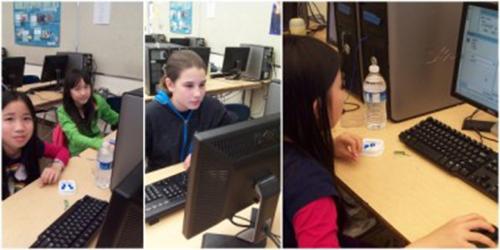
THE FACTS OF FACT CAMP: I started FACT (Females Advancing Computing and Technology) camp with another student and my technology teacher Mr. Galbraith. It’s still going on at Sunset High School in the Beaverton School District, in Portland, Oregon. In our first year, we received funding from money that Intel STS gave to my high school when I became a finalist.
At our first camp, we hosted 15 girls and introduced them to game design, graphic design, and robotics to pique their interest in technology. The next year, I spent a lot of time reaching out for additional resources so we were able to acquire tablets from Intel, host more girls, and take them on field trips that exposed them to real-world tech careers.
MENTORSHIP IS KEY: I truly believe that mentorship programs for young girls interested in science, engineering, and math is a necessary step to ensuring that we move towards a 50:50 ratio in these fields. We need to emphasize this in our educational system in order to harness the other half of the population and ensure that women are encouraged to move up in STEM fields at the same rate as men. I have noticed that middle school ages are when we seem to lose the largest interest in STEM subjects from girls. Focusing on this group should be a priority moving forward and I hope to stay involved in these efforts as I leave college.
It’s okay to ask questions and admit when you do not know the answer to something.
ON DECIDING A MAJOR IN COLLEGE: In college, I majored in mechanical engineering and minored in human biology. Having done environmental health research in high school, I was inspired to learn more about the interaction between the environment and human health, which is why I took the entire human biology core at Stanford because it was an interdisciplinary approach to the standard biology subject material, including behavioral, social, and cultural aspects.
Mentorship programs for young girls interested in STEM is a necessary step to ensuring we move towards a 50:50 ratio in these fields.
I was also incredibly inspired by my final science fair project (in my senior year of high school) to pursue an engineering major so that I could understand engineering systems and manufacturing processes. Taking mechanical engineering classes were a natural fit for my skillset and interests, so I continued to take these courses until I was well on my way to completing the major.
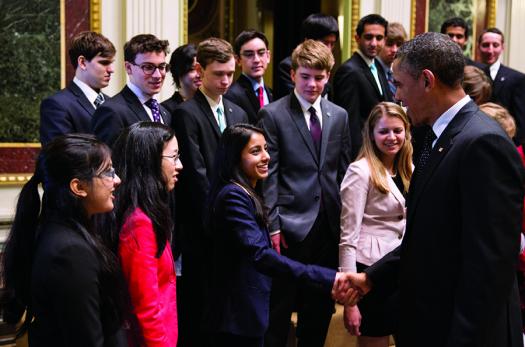
HOW SHE FIRST BECAME INTERESTED IN SCIENCE: My parents did a great job of letting my brother and I explore science at a young age, without boundaries or rules. For example, on the weekends, we would often visit a science museum in Portland, Oregon called Oregon Museum of Science and Industry. Running around the main hall of this museum exposed me to making flubber, chemistry experiments, understanding the orientation of windmill blades, and even interacting with artificial intelligence for the first time. My parents never pushed us into things that we were not interested in, but were very open to spending time letting us explore what we wanted to pursue. In my case, that was science.
HER MOST MEMORABLE EXPERIENCE IN SOCIETY COMPETITIONS: The most memorable experience was the Intel STS judging session and working through the questions and riddles with others students after judging was over. The judging experience was so different from anything I had encountered through previous years of science research. The questions they asked were either very open-ended or extremely specific and made us think outside of the box. In four 15-minute sessions, my brain was stretched in ways that I didn’t know was possible as I was asked to create technologies that didn’t exist, work through math problems on the spot, answer questions that I’ve never considered before, and force myself to see familiar concepts from angles that were outside my high school coursework and extensive research. At the end, I felt humbled and inspired because what I realized is that it’s really about the thinking process and not necessarily about the answers.
Persevere in the field even when it seems that you are not cut out for it or that it is too hard.
HER ADVICE FOR OTHERS INTERESTED IN STEM: My advice would be to persevere in the field even when it seems that you are not cut out for it or that it is too hard. Usually, it is only because you need to spend more time on it. For people who have been exposed to individual research and the science fair circuit at a younger age, this idea comes more naturally because you realize that there is no way to reach real results unless you put in hours of time to plan experiments thoughtfully and analyze the results.
I would highly encourage finding mentors in the field who can guide you through the process of research in STEM at a younger age. Start getting involved with Intel ISEF (and STS) as soon as you figure out a topic you want to explore or a field you’re passionate about.Society alumni enter diverse fields with their STEM backgrounds. Support them by becoming a member.
